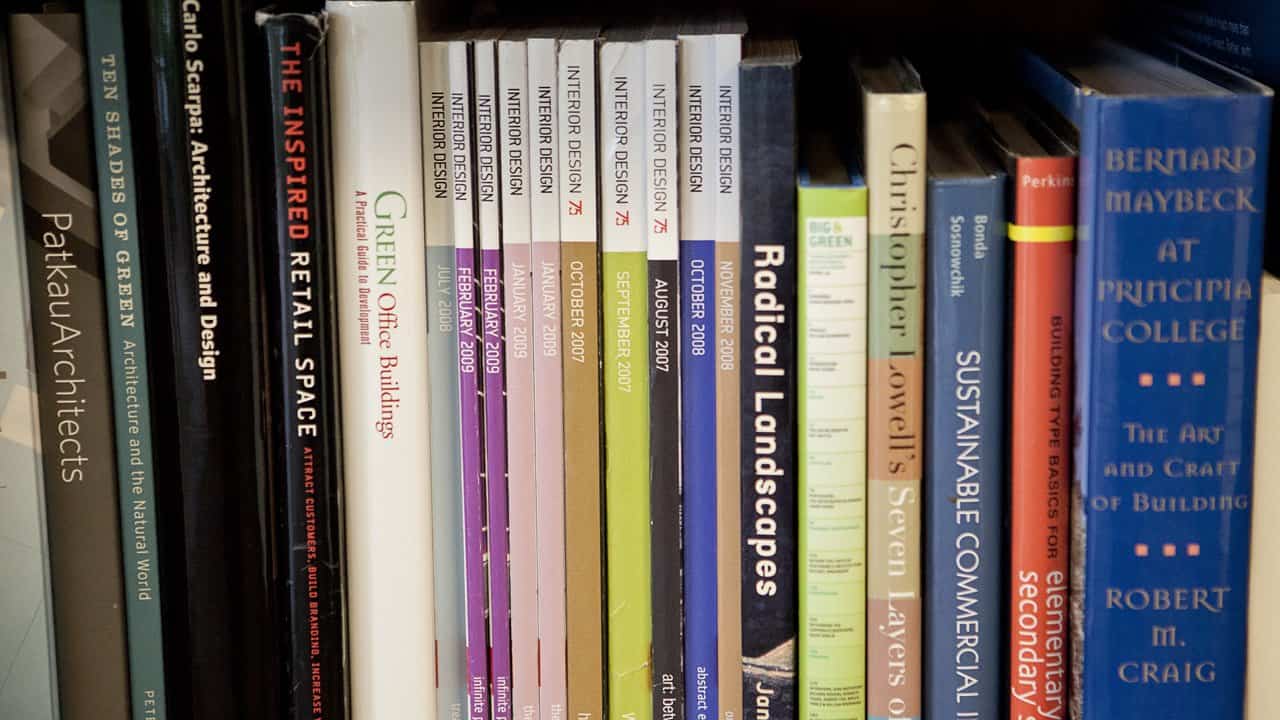Crafting a New Paradigm for a Changing World
As we proceed through an ever faster changing millennium, the question for us to consider may not be what will the 21st century library look like, but, is the concept of the public library as we know it today valid for tomorrow’s communities and realities?
At Little, we are continuously investigating the role of the Public Library in the future. We feel highly passionate about how innovation in the design of public libraries can support a new world mindset. A paradigm that includes the irresistible accessibility to content, the possibility to learn anytime and anywhere, the digitalization of all knowledge, and the exponential growth of multimedia as a way to consume and produce content.
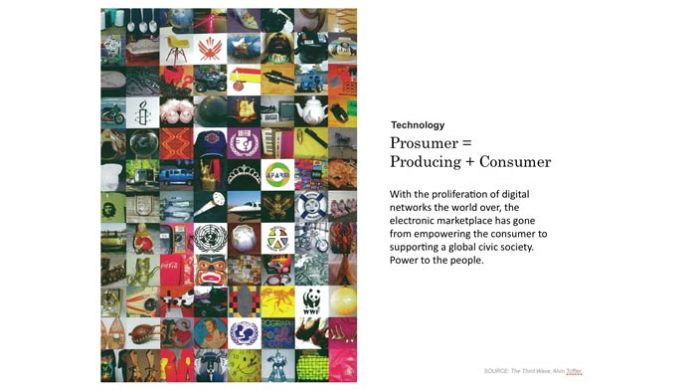
As we look at the Public Libraries, we are looking at how all those changes may affect the current model, its service to the community, the guidance to knowledge, the physical and virtual design of its environments, and the user experience of those environments. We are promoting the concept of the Athenaeum as the word suggests an environment that promotes learning in its largest sense and it is not limited to just printed and digital media as it may unintentionally be understood by a portion of the potential patronage. The Athenaeum concept also supports a much wider understanding of a space used for all purposes that unite knowledge and the community with both intellectual and social dimensions, a place for cultural and community exchanges as much as scholarly discourse .
We have developed a series of key thoughts and ideas, both programmatically and experientially, that we foresee as critical in the next 5-20 years. These ideas have been developed from our experience working with both public and academic libraries, as well as through our continued research on challenges and opportunities for libraries in the future.
These concepts are seen as opportunities in the design of facilities to stay relevant and exceed patron’s expectations while reframing the concept of the Public Library of the future as a place that promotes learning and supports intellectual exchanges. These concepts are focused on three main areas – User Experience, Services, and Facilities.
- Patron-experience focus. Customization of the library experience to each user. Libraries should ask and know: where have you been? Where are you going?

- Libraries should have a client management system that supports each user’s goals in learning, research and interests; that suggests and feeds individuals with additional information that could be very valuable to the client, a concept that Rick Levine, Christopher Locke, Doc Searls, and David Weinberger called The Clue Train Manifesto. As part of our experience in diverse project types, we are exploring such a concept with our retail and education clients, what we call the Unified Customer Experience. It is a process that identifies a customer’s journey before, while, and after the experience. It is applicable to all industries as it is a process, but the metrics are customized for each industry. In education, we are looking at it as a way to track a student prior, while, and after they have gone through the learning experience. Such a system would provide libraries a way to measure their patrons’ needs/wants, and would also suggest innovation to both the virtual and physical environments, and programmatic offerings to transform the user experience.
- The redefined multimedia experience – a 3D immersive environment. We are looking at enriching the learning experience. Taking the book as a starting point, and developing that acquired knowledge into a more immersive experience through interactive panels such as Perceptive Pixel which shows the possibility of digging deeper through collaborative research in a graphically interactive way; and, through virtual reality enhancing of the physical environment, as with technologies like Aurasma which take personal mobile devices to promote a deeper level of learning experience.
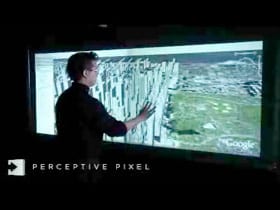
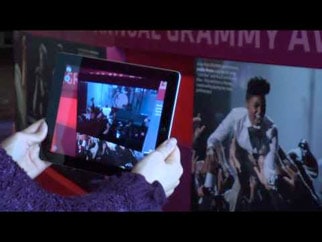
- The highest value brought on by the explosions of new technologies lies in the power of sharing data, work, or research. The open visibility of sharing information in the public realm could intrinsically become the most important aspect of the library experience.
- Always Free – The reality is that the library is the only place in a community that is always free of charge. Capitalizing on that fact is a must. It seems that we need to be reminded often that it is free! The more state-of-the-art resources the library can offer the greater the relevance to its patrons will be.
- Search technology – Robust tools, multi-dimensional, visual data analysis. It is no longer enough to look at search results in a listed format. This industry will explode in the coming years, and being able to experience visualization of data at the public library level, and at large scale, could be a huge draw. Here are a couple of interesting examples of what we are looking at: http://nytlabs.com/projects/cascade.html and http://www.autodeskresearch.com/projects/citeology (move and click around on this one as it is interactive). Technology at every level will need to support the search and acquisition of knowledge.
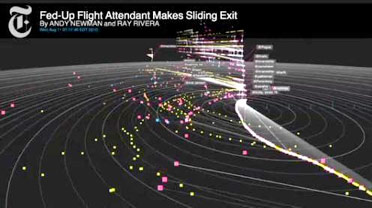
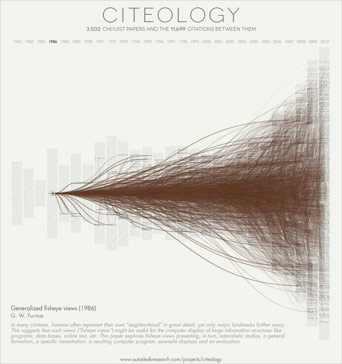
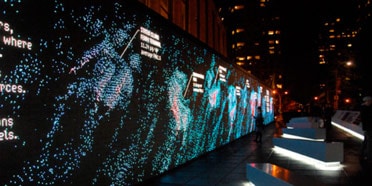
5. Speed and effectiveness of research findings. It will be critical for public libraries to focus on further refining and displaying information in the most relevant way. Efficiency in investigation and visual expression of that research will be expected and necessary as information grows exponentially. Critical to our inquiry will be the support and guidance of librarians to help us navigate to valuable and effective resources. Their work will be valued and judged by the speed and easiness by which they can help us arrive to information that we seek.
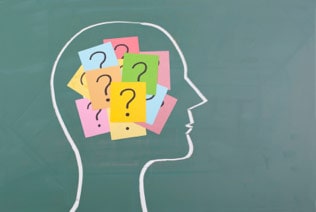
6. Gateway to help. The library will become the perfect place to get help on anything from job related research, to education help, to technology help. It will exploit that patron’s need for help in a multi-dimensional way. When the library can help patrons with a specific search, troubleshoot problems with any technology, support knowledge acquisition, or learn a new skill, the institution becomes a true provider of solutions to needs. That is the ultimate service that a public library should provide.

7. Gateway to entrepreneurship. With increasing costs of education, and lowering costs of personal technology and free access to information, self-education may very well be the next frontier. When you have websites like Innocentive that will pay you for providing a solution to a challenge, and you have websites like Ohio State University that provide 100+ chemistry courses online for free, it’s easy to speculate that at some point, it may be more about the ideas, than the degree you have. The public library may be instrumental to that process by providing opportunities and solutions for entrepreneurship; where patrons from different walks of life can collaborate on an as needed basis, on projects, or on a partnership venture. In prompt partnerships could be created, similar to what Grind in New York has evolved to be: a third place workplace where potential partnerships can sprout at any moment; where entrepreneurship rises outside of the standard venues; and where it is supported by the needed infrastructure, i.e.: teleconference rooms with state of the art technologies, video recording, audio recording, printers, large scale scanners, printers, and screens, etc… in short, a pay as you go workplace. It could become a successful revenue generator for libraries regardless of size.
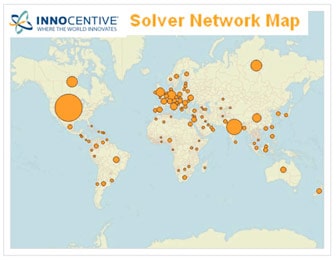
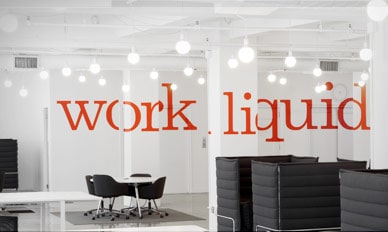
8. Acquisition of skills. Need a skill? The public library can help you. The idea being that if you lose your job, and you need to learn something new to stay relevant, the public library will complement the community college as a place to gain new skills, but free. A place that can provide spaces for online collaborative learning, where patrons can take classes online with other patrons that have your similar interests, and where they can have a support group to review information, discuss course topics, or work on a project together. The idea would be that instead of going through courses on your own, you would have time at an equipped space for knowledge development and an inquiry support group with fellow citizens.
9. Learning space. Programmatically, we see a big need for a series of diverse learning spaces where lessons (English as a second language, search methodology classes, technology courses, software lessons, courses, entrepreneurial topics, skills, latest technology demonstrations, etc…) can be taught by the library staff or external instructors. The classrooms could be booked on an as needed basis at a low cost if applicable, again, serving as a revenue generator for libraries.
10. Community space – Similarly, the library can serve as a place where more informal and formal events can take place such as art events, literary events, celebrations, special events, voting, non-profit organization gatherings, etc…. A place that can be checked out by anybody and any organization, a place that brings the community together. It could be used as a revenue generator for libraries.
11. Auditorium Space – A place to enhance the library and community experience. Movies, lectures, kids performances, live online events could occur if such a place was available to patrons. If designed correctly it could even serve as an outdoor movie venue, or event space on the green.
12. Showroom for latest technology – What if libraries provided a place to tinker with latest products and technologies? The library could partner with manufacturers and vendors to showcase latest products that users could review and learn about without the pressure of purchasing. As a patron you would know that if a new product comes out, you can see it at the library and tinker with it. Partnerships could be created to highlight the latest innovations on research and learning technologies and software.
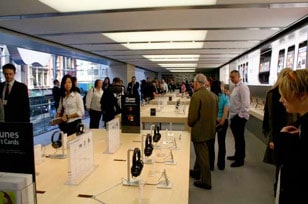
13. Recording studios – The library could exploit the growing needs for both audio and video technology and environment. Currently there are large limitations to finding such places in a community. By having state of the art equipment and an environment that invites content creation, not just consumption, the library could position itself as the go-to place when patrons are in need of more sophisticated equipment. Those facilities could also be used as a webcast and broadcasting center for specific events organized by the community, or its patrons.

14. Social Space. If thought of as an Athenaeum instead of only a library, this unifying place is where people can come together, a meeting point. A place where you can share what you are reading, or researching, where you can find like-minded people. Where you can collaborate with others in an informal setting. It provokes conversation and facilitates community interactions. It supports the concept of learning anywhere and anytime. It would be a more flexible space, used for various types of events.

15. Retailing of the public library. The social quality of the Library space could be supported by retail establishments that enhance the continued use of the library such as coffee places, light food retailers, etc. Such strategy would introduce income generating possibilities, and would also allow the ‘stretching’ of the library experience by encouraging patrons to linger longer. Additionally, the presentation of ‘merchandising’ as well as display of knowledge could become critical features of the new user experience.
